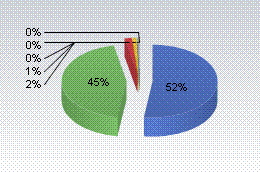Cisco To Expand 30 Market Adjacency Initiatives To 50
Cisco Systems has long sought to branch beyond its core networking business as the expansion of the router and switching markets slowed.
First it was into advanced technologies, such as home networking, unified communications and IP telephony.
Then it became “market adjacencies,” named as such because they were seen as adjacent to the company’s existing markets. Cisco is presently developing businesses in about 30 adjacencies, including the smart energy grid and what it calls smart connected communities, where cities use networks to drive economic development and deliver services.
That list will grow shortly to 50.
During a fourth-quarter conference call on Wednesday, CEO John Chambers said an expansion of the initiatives was likely. “Assuming we are successful, you will see us expand well beyond (the) 30 we have today,” he told analysts.
He pointed out that all adjacencies are designed to expand the role of the network and are opportunities that could grow into billion dollar businesses. They are in various stages of evolution, he added.
But he didn’t specify the extent of the expansion Cisco had in mind.
During a Thursday evening panel discussion, however, Cisco Senior Manager of Workplace Resources John Hailey let the number slip. There soon will be 50 initiatives, he said while discussing Cisco’s efforts to become a green company.
It will be interesting to discover what they are.
Cisco Systems has long sought to branch beyond its core networking business as the expansion of the router and switching markets slowed.
First it was into advanced technologies, such as home networking, unified communications and IP telephony.
Then it became “market adjacencies,” named as such because they were seen as adjacent to the company’s existing markets. Cisco is presently developing businesses in about 30 adjacencies, including the smart energy grid and what it calls smart connected communities, where cities use networks to drive economic development and deliver services.
That list will grow shortly to 50.
During a fourth-quarter conference call on Wednesday, CEO John Chambers said an expansion of the initiatives was likely. “Assuming we are successful, you will see us expand well beyond (the) 30 we have today,” he told analysts.
He pointed out that all adjacencies are designed to expand the role of the network and are opportunities that could grow into billion dollar businesses. They are in various stages of evolution, he added.
But he didn’t specify the extent of the expansion Cisco had in mind.
During a Thursday evening panel discussion, however, Cisco Senior Manager of Workplace Resources John Hailey let the number slip. There soon will be 50 initiatives, he said while discussing Cisco’s efforts to become a green company.
It will be interesting to discover what they are.








